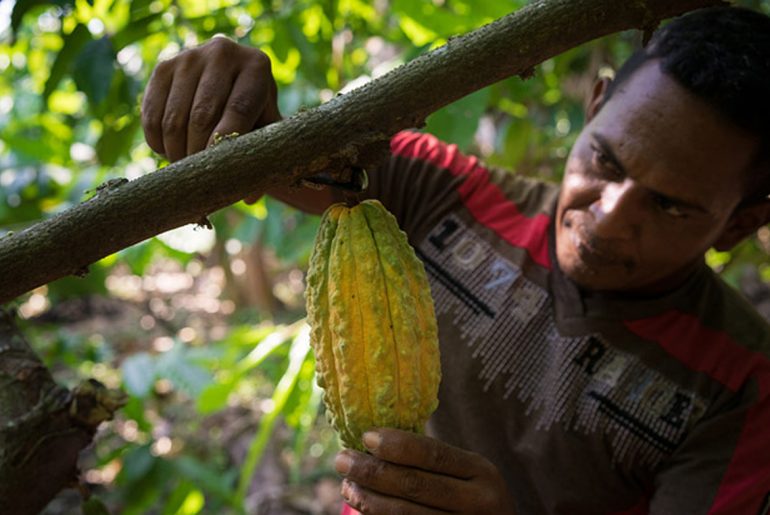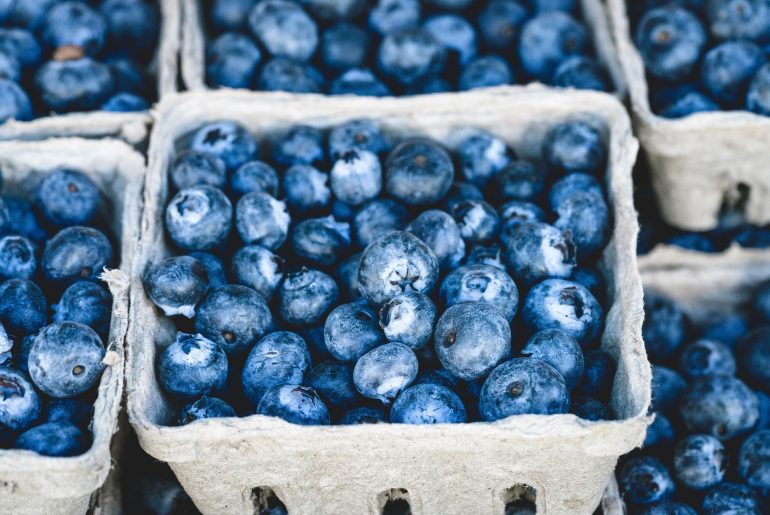Halloween and Thanksgiving are quickly approaching, but the spirit of the season has already been here for weeks. By early August, retailers were stocking shelves with pumpkin-flavored foods. Starbucks began selling it’s famous Pumpkin Spice Latte back on Aug. 27, and pumpkin beer has been available in bars for just as long. People associate pumpkins with fall, and as they look forward to the season, the demand for pumpkin everything increases. According to Nielsen data, sales of pumpkin and pumpkin spice-flavored items skyrocketed in 2017 $488.7 million – up from $286 million in 2013. But this hasn’t always been the case. There was a time when pumpkins weren’t celebrated as they are today — with products bearing their beloved image and contests cheering on their gigantic size. “American colonists were less than enthusiastic about pumpkins,” said Cindy Ott, author of Pumpkin: The Curious History of an American Icon. The colonists were accustomed to eating a diet of domesticated meats and…
Thick or thin? The skinny on asparagus size
‘Tis the season for asparagus. And whether we get it from the grocer or our garden, it would be hard not to notice the size difference in asparagus stalks. So which is better, thick or thin? For a while “thin was in.” Skinny stalks were thought to be more tender and were even marketed as “gourmet.” Thicker stalks were passed over at the market because they were thought of as woody and tough. (Admit it. You assumed this, too.) But larger doesn’t actually mean tougher, and our association of “young” and “tender,” when it comes to asparagus, is incorrect. In fact, according to Penn State’s College of Agricultural Sciences, young asparagus puts a lot of energy into producing spears that can stand upright, so the younger plant is more likely to have more crude fiber per square inch. Whereas, if thick asparagus got a reputation as woody, it’s because home cooks…
Chocolate on track to be extinct in 40 years, experts say
For chocolate lovers, there’s simply no substitute. Unfortunately, the future of the one and only source of that delicious brown concoction, the cocoa bean, is in danger. Thankfully, scientists are working to avoid a world, in our own lifetime, in which chocolate goes extinct. According to the National Oceanic and Atmospheric Administration, cacao plants are expected to go extinct by 2050 due to globally rising temperatures and drier weather patterns in the region the plants are grown. Cacao plants already grow in a precarious part of the planet. They only succeed in a narrow strip of rainforested land, found about 20 degrees north and south of the equator. Temperatures here stay relatively constant, no matter the season. More than half of the world’s chocolate now comes from just two countries — Côte d’Ivoire and Ghana. But the temperatures in these countries are projected to rise nearly 4º Fahrenheit by 2050…
Maine blueberry crop hit hard by disease, lack of pollination
Bad news for pie lovers. Maine’s wild blueberry crop is likely to be much smaller this year than in recent summers because the industry is contending with troubles such as disease and a lack of pollination. The New England state is the wild blueberry capital of the U.S. In recent years, crop sizes have soared and prices have plummeted. The crop grew a little less than one percent last year to almost 102 million pounds (46 million kilograms), while prices hit a 10-year low of 27 cents per pound to farmers. University of Maine horticulture professor David Yarborough says that is changing this year. He says “mummy berry” disease and other factors could cut the crop as much as 36 percent this summer. Because oversupply has been driving down prices in recent years, the farmers had already decreased their efforts with the fruit crop. Yarborough said a shortage of bees and other pollinators…
Global vanilla shortage will see pastry, ice cream prices soar
The world-wide vanilla shortage is coming to an ice cream cone near you. Pastry chefs and ice cream makers alike are looking to cut back overall consumption due to the rising cost of fair-trade vanilla, meaning that the recipes of our favorite summer sweets could be effected. And we have no one but ourselves to blame. The high demand from consumers, in recent years, switching to all-natural foods has caused the shortage. The problem was then compounded by major corporations like Nestle and Hershey’s that, in response to consumer demand, declared they were then switching from cheaper, chemically created synthetic versions of vanilla to all-natural varieties, too — meaning that they want vanilla from orchid seeds, and not factories. Factories can crank out the synthetic stuff around the clock, but there just aren’t enough vanilla pods in the world to meet demand. A few years ago, a 1-gallon bottle of organic, fair-trade vanilla would cost about $64 — today,…





